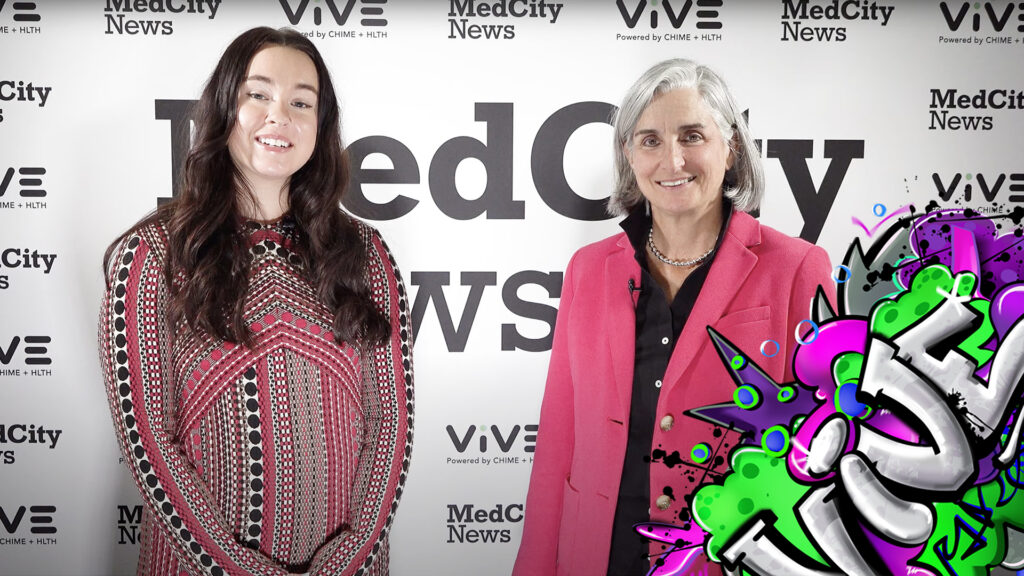Sarah Shillington, Chief Customer Officer with Artera, talked about how it is using the Harmony omnichannel platform to improve and organize care management to serve its 800+ provider customers.

Sarah Shillington, Chief Customer Officer with Artera, talked about how it is using the Harmony omnichannel platform to improve and organize care management to serve its 800+ provider customers.
Katie Adams, Question: Hello, and welcome to The Vibe at ViVE. I’m Katie Adams, a reporter with MedCity News, and I’m here with Sarah Shillington, Chief Customer Officer at Artera, which is a patient communication platform.
So, I know that Artera provides engagement and patient communication technology for hundreds of providers, so you’d be a good person to answer this question: why is patient communication such a huge challenge right now? I mean, is it a broken experience with all of the specialty services and digital health companies and other programs trying to directly communicate with patients?
Sarah Shillington, Answer: Well, you’re right on track there, Katie, and thanks for having me. First and foremost, patients are getting bombarded with numerous communications – not only from different vendors but also from different practices or specialties even within their own health system and they have no visibility, understanding, or awareness of what’s coming at those patients today.
So, we actually have done some research and we know that on average, 11 different vendor systems are communicating with patients in an average enterprise health system, and so that experience is really – it’s too much noise for the patient and they’re not responding to all of these
communications because there’s just too much coming at them and they don’t know what’s important, they don’t know what’s being spammed at them, and so it is a really frustrating experience for patients, and I’ve got a couple of different examples.
One is an example of a really bad experience from a real customer who said to me their patient had a mammogram and then a day later got a financial payment estimate for a biopsy before they even knew that they were communicated about the fact that they needed a follow-up due to a result in the mammogram, so a really negative experience.
Another example is just recently I was diving into some data and saw that a patient had received a weekly allergy appointment – within 2 minutes, they got 52 text messages and then they got 52 surveys asking them if the scheduling experience was great: they call these series bookings, but the series also triggered a series of surveys coupled with the first reminder and the first directions to the parking garage – they just had hundreds of messages in a matter of five minutes.
Are you going to look at that? I don’t even look at if my kids send me 100 messages.
Katie Adams, Question: Yeah, I mean especially with the mammogram example, healthcare can already be such a scary, sometimes anxious, place so to get a communication like that without getting a chance to talk to your doctor is certainly a problem we need to fix.
So, I wanted to talk about Harmony, which I know Artera recently launched that platform. Can you talk about why it’s important for providers and walk me through an example of how it improves the communication experience from a patient perspective?
Sarah Shillington, Answer: Absolutely. So I think the first thing is it’s now able to provide an omnichannel orchestrated patient communication solution for healthcare, and it starts with giving health systems visibility to those issues. The example of the 52 allergy appointments and the 52 surveys actually came from me looking into this information and seeing it in a health system.
The second issue is being able to orchestrate that communication to the patient, so in the example of the mammogram, wouldn’t it be great if we could throttle that over messaging and orchestrate the important care management types of messages, and then maybe a day later or two days later send the financial information? Meaning we take great insights to understand
what to communicate in what order and why, so that we’re improving patient care and then giving that patient an amazing patient experience that makes them want to respond to your text messages and engage with your health system. So, it’s a single pane of glass to be able to view all of that information and orchestrate that for the patient so they have improved patient engagement and hopefully improved patient care as well.
Katie Adams, Question: You’ve mentioned some of these stories from your customers, so I’m curious to know if you could name a few of who your provider customers are and then maybe share an example of two of how you’re helping them improve their patient communication.
Sarah Shillington, Answer: Wonderful. So we have over 750 healthcare customers that work with us – whether it’s academic facilities, children’s health systems, large enterprise systems like Hackensack Meridian Health or UNC (University of North Carolina) Health would be great examples. What my team does is we partner with those customers to understand what their patient experience challenges are and we create success plans with them that’s sort of a road map to solve these challenges within our platform, all directed around improving their success with patient experience and patient care – and it’s really their plan, so it’s a road map for their success that we partner with them to achieve. I love it because we build these success plans and we’re constantly iterating them with our customers and they get to see the results because they’re the results that they wanted to achieve, so it’s it’s a wonderful opportunity to partner with customers to improve healthcare.
Katie Adams: Excellent. Well thank you for sharing those customer success stories, and thank
you for your time. I hope you enjoy the rest of Vive.
Sarah Shillington: Thank you very much.